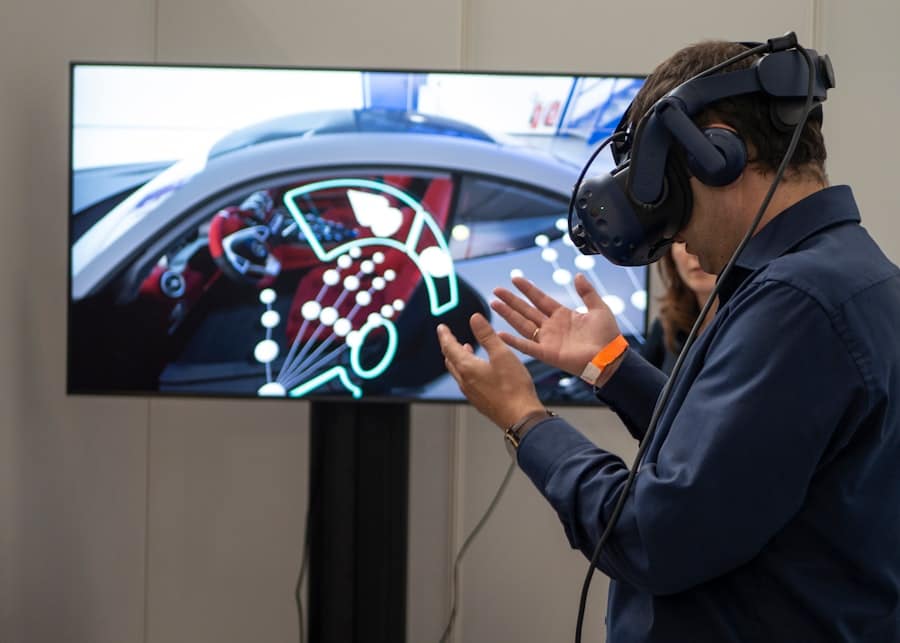The landscape of education has undergone a significant transformation in recent years, particularly with the advent of technology. Continuous Professional Development (CPD) has emerged as a critical component for professionals seeking to enhance their skills and knowledge throughout their careers. EdTech, or educational technology, plays a pivotal role in this evolution, providing innovative tools and platforms that facilitate learning in a more engaging and effective manner.
The integration of technology into CPD not only enhances accessibility but also allows for a more personalized approach to professional growth. As organizations recognize the importance of lifelong learning, they are increasingly turning to EdTech solutions to meet the diverse needs of their workforce. Traditional methods of CPD, such as workshops and seminars, are being supplemented or replaced by online courses, webinars, and interactive learning modules.
This shift is driven by the need for flexibility, as professionals often juggle multiple responsibilities and require learning opportunities that fit into their busy schedules. The rise of EdTech in CPD signifies a broader trend towards embracing digital tools that can enhance the learning experience and foster a culture of continuous improvement.
Key Takeaways
- EdTech is revolutionizing Continuous Professional Development (CPD) by providing innovative tools and platforms for learning and skill development.
- Current trends in EdTech for CPD include personalized learning, virtual reality, gamification, and microlearning, offering diverse and engaging learning experiences.
- Artificial Intelligence (AI) plays a crucial role in CPD by providing personalized recommendations, adaptive learning, and data-driven insights for continuous improvement.
- Virtual Reality (VR) is transforming CPD by offering immersive and interactive simulations for hands-on training and real-life scenarios.
- Gamification and microlearning are enhancing CPD by making learning more engaging, interactive, and accessible, catering to individual learning styles and preferences.
Current Trends in EdTech for CPD
The current trends in EdTech for CPD reflect a growing emphasis on learner-centered approaches and the integration of advanced technologies. One notable trend is the increasing use of Learning Management Systems (LMS) that provide a centralized platform for delivering training content, tracking progress, and assessing outcomes. These systems enable organizations to curate a wide range of resources, from video lectures to interactive quizzes, allowing learners to engage with material at their own pace.
The flexibility offered by LMS platforms is particularly beneficial in accommodating diverse learning styles and preferences. Another significant trend is the rise of mobile learning, or m-learning, which allows professionals to access training materials on their smartphones or tablets. This shift towards mobile accessibility aligns with the growing expectation for on-the-go learning experiences.
Professionals can now engage with CPD content during their commutes or while traveling, making it easier to integrate learning into their daily routines. Additionally, the use of social media and collaborative tools within EdTech platforms fosters peer-to-peer interaction and knowledge sharing, further enriching the learning experience.
The Role of Artificial Intelligence in CPD

Artificial Intelligence (AI) is revolutionizing the way CPD is delivered and experienced. One of the most significant contributions of AI to CPD is its ability to analyze vast amounts of data to provide personalized learning experiences. By assessing individual learners’ strengths, weaknesses, and preferences, AI can recommend tailored content that aligns with their specific needs.
This level of customization not only enhances engagement but also improves retention rates, as learners are more likely to connect with material that resonates with them.
These tools can provide instant support and guidance to learners, answering questions and offering resources in real-time.
For instance, a professional seeking clarification on a complex topic can interact with an AI chatbot that delivers relevant information or directs them to appropriate learning modules. This immediate access to assistance helps maintain momentum in the learning process and reduces frustration associated with traditional methods of seeking help.
The Impact of Virtual Reality on CPD
Virtual Reality (VR) is emerging as a transformative force in CPD, offering immersive experiences that traditional training methods cannot replicate. By simulating real-world scenarios, VR allows professionals to practice skills in a safe environment without the risks associated with actual practice. For example, medical professionals can engage in VR simulations that mimic surgical procedures, enabling them to hone their techniques before performing on real patients.
This hands-on approach not only builds confidence but also enhances skill acquisition through experiential learning. Furthermore, VR can facilitate collaborative training experiences across geographical boundaries. Teams can come together in a virtual space to participate in joint training sessions or workshops, regardless of their physical locations.
This capability is particularly valuable for organizations with remote employees or those operating in multiple regions. By leveraging VR technology, companies can foster a sense of community among their workforce while providing access to high-quality training resources that might otherwise be unavailable.
Gamification and Microlearning in CPD
Gamification has gained traction as an effective strategy for enhancing engagement in CPD programs. By incorporating game-like elements such as points, badges, and leaderboards into learning experiences, organizations can motivate professionals to participate actively in their development. For instance, a company might create a gamified platform where employees earn rewards for completing training modules or achieving specific milestones.
This competitive aspect not only encourages participation but also fosters a sense of achievement among learners. Microlearning complements gamification by breaking down complex topics into bite-sized modules that are easier to digest. This approach aligns with the modern learner’s preference for quick, focused content that can be consumed in short bursts.
For example, instead of attending a lengthy workshop on project management, professionals might engage with a series of microlearning videos that cover key concepts in just a few minutes each. This method not only enhances retention but also allows learners to revisit specific topics as needed without feeling overwhelmed by extensive material.
The Future of Personalized Learning in CPD

The future of personalized learning in CPD is poised for significant advancements as technology continues to evolve. With the integration of AI and data analytics, organizations will be able to create even more tailored learning experiences that adapt in real-time based on individual progress and feedback. This dynamic approach will enable professionals to navigate their development paths more effectively, focusing on areas where they require additional support while advancing through content they have already mastered.
Additionally, the concept of competency-based education is gaining traction within CPD frameworks. This model emphasizes mastery of specific skills or competencies rather than time spent in training programs. As organizations adopt this approach, they will increasingly rely on technology to assess competencies through assessments and practical applications.
This shift will empower professionals to take ownership of their learning journeys, allowing them to progress at their own pace while ensuring they meet the necessary standards for their roles.
Challenges and Opportunities in Implementing EdTech for CPD
While the integration of EdTech into CPD presents numerous opportunities, it also comes with its share of challenges. One significant hurdle is the resistance to change among some professionals who may be accustomed to traditional training methods. Overcoming this resistance requires effective change management strategies that emphasize the benefits of EdTech solutions and provide adequate support during the transition period.
Organizations must invest in training for both learners and facilitators to ensure everyone is comfortable navigating new technologies. Another challenge lies in ensuring equitable access to EdTech resources across diverse populations within an organization. Not all employees may have the same level of technological proficiency or access to devices necessary for engaging with online learning platforms.
To address this issue, organizations should consider implementing blended learning approaches that combine online resources with face-to-face interactions. This hybrid model can help bridge the gap for those who may struggle with fully digital experiences while still leveraging the advantages of EdTech.
The Potential of EdTech in Shaping the Future of CPD
The potential of EdTech in shaping the future of Continuous Professional Development is immense.
From AI-driven recommendations to immersive VR simulations, the tools available for enhancing CPD are becoming increasingly sophisticated and accessible.
As organizations embrace these innovations, they will not only improve employee engagement and retention but also foster a culture of continuous learning that drives overall organizational success. The future of CPD lies in harnessing the power of EdTech to create dynamic learning environments that empower professionals to thrive in an ever-evolving landscape. By investing in these technologies and addressing the challenges associated with their implementation, organizations can unlock new opportunities for growth and development within their teams.
In a recent article on ENICOMP, they discuss the best tablets for students in 2023, highlighting the importance of technology in education. This article complements the discussion on the future of EdTech in supporting continuous professional development by emphasizing the role of devices in enhancing learning experiences. To read more about the best tablets for students, check out the article here.
FAQs
What is EdTech?
EdTech, or educational technology, refers to the use of technology to enhance teaching and learning in educational settings. This can include tools and resources such as online learning platforms, educational apps, virtual reality, and artificial intelligence.
What is Continuous Professional Development (CPD)?
Continuous Professional Development (CPD) refers to the process of ongoing learning and skill development that professionals engage in to maintain and enhance their knowledge and expertise in their field.
How does EdTech support Continuous Professional Development?
EdTech supports Continuous Professional Development by providing convenient and flexible learning opportunities for professionals. This can include online courses, webinars, virtual conferences, and other digital resources that allow professionals to access learning materials at their own pace and on their own schedule.
What are some examples of EdTech tools for CPD?
Examples of EdTech tools for CPD include learning management systems (LMS), online course platforms, virtual reality simulations, educational apps, and AI-powered personalized learning platforms.
What are the benefits of using EdTech for CPD?
The benefits of using EdTech for CPD include increased accessibility to learning resources, personalized learning experiences, the ability to track and measure learning progress, and the opportunity for professionals to engage in collaborative and interactive learning experiences.
What are some challenges in using EdTech for CPD?
Challenges in using EdTech for CPD can include issues related to technology access and digital literacy, concerns about the quality and credibility of online learning resources, and the need for ongoing support and training for professionals to effectively utilize EdTech tools for CPD.


Add a Comment